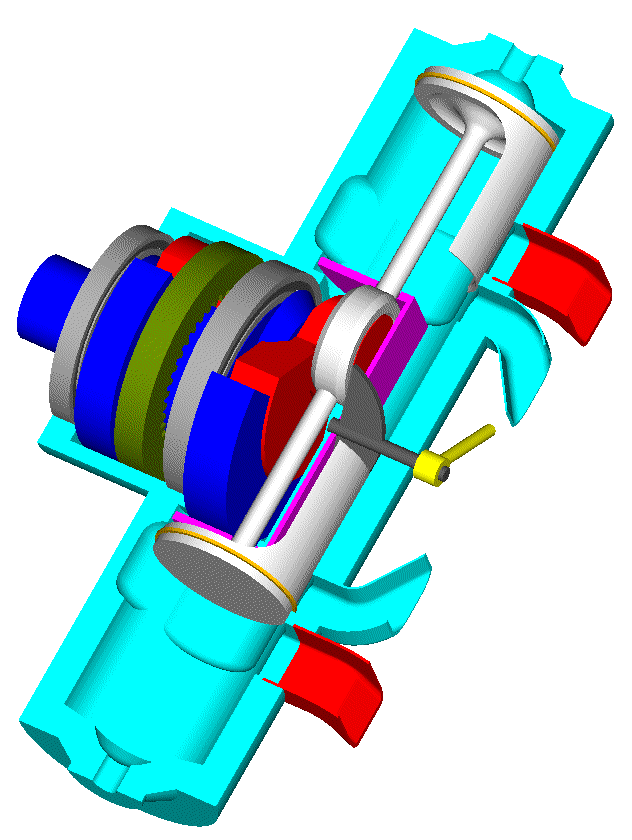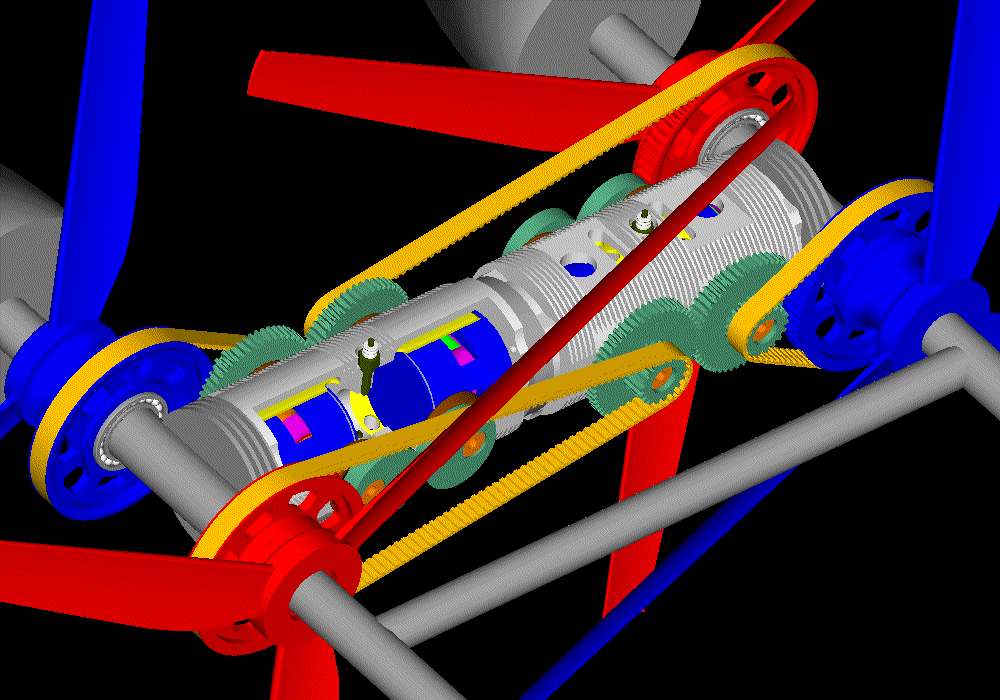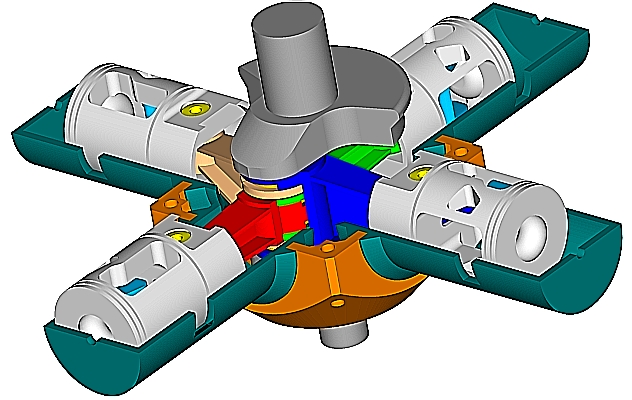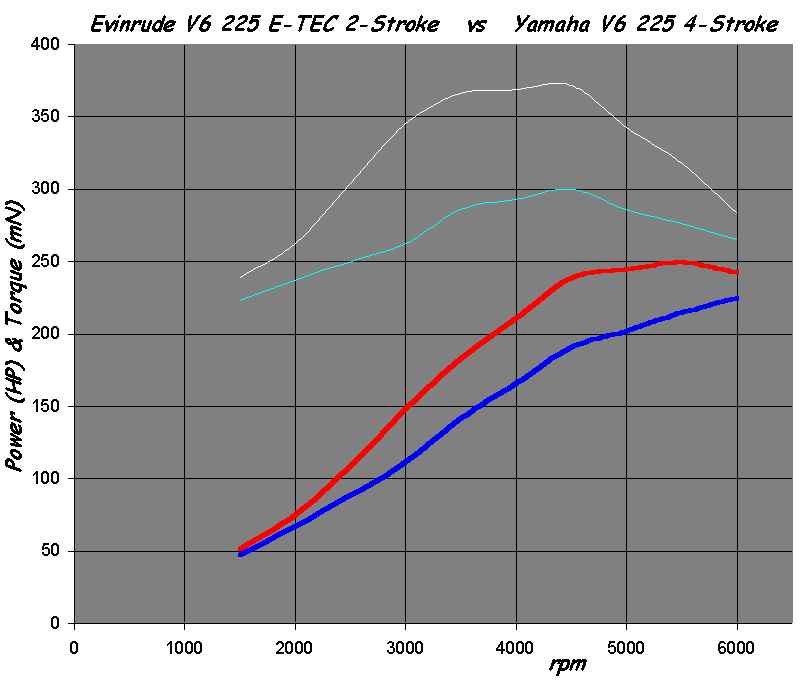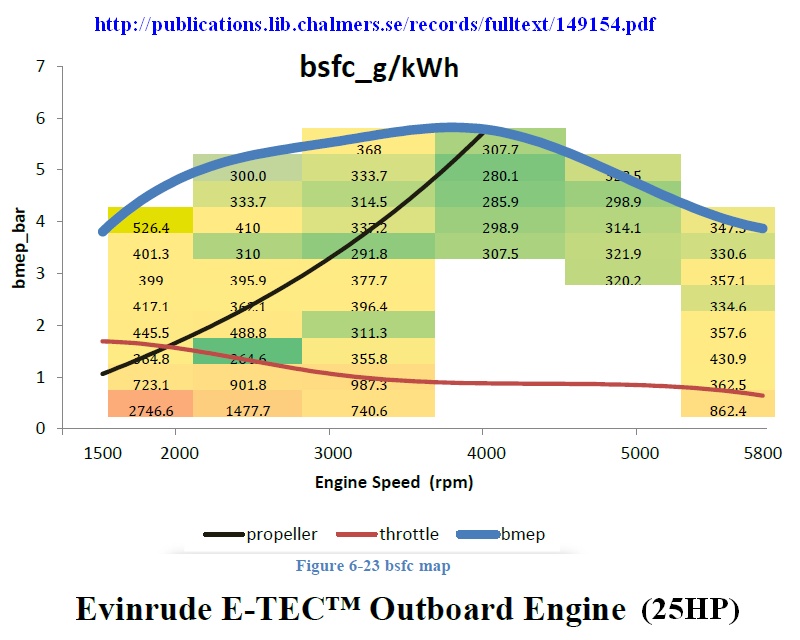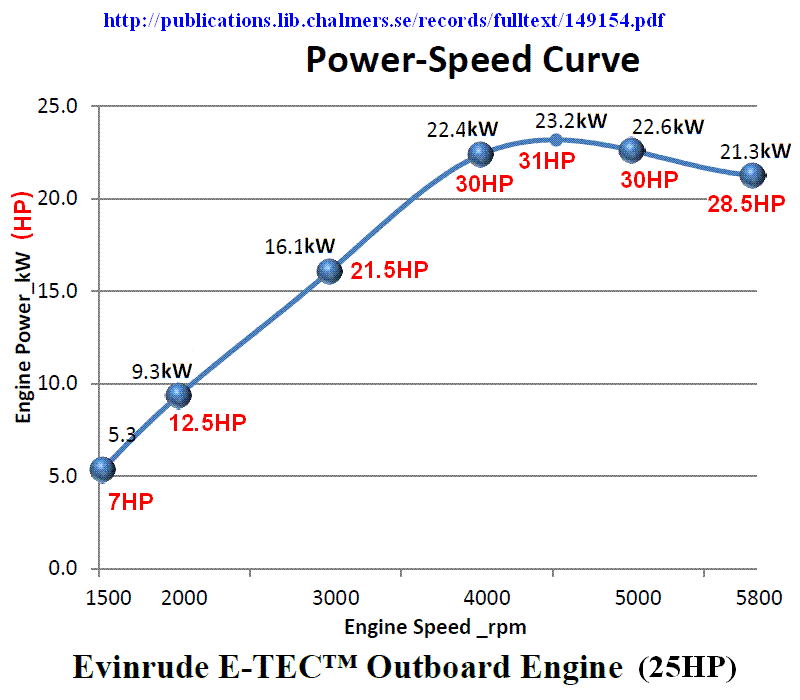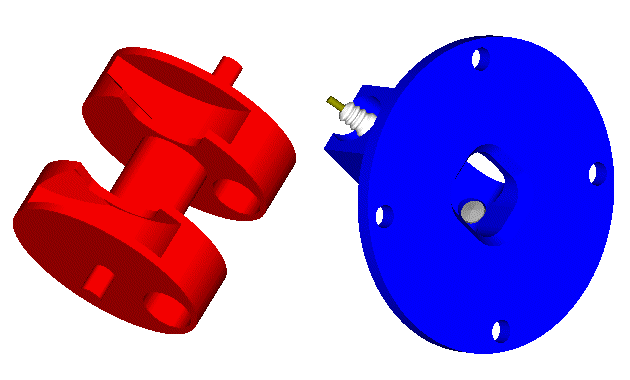You write:
“Well, that depends... on how far/fast you want to move.. if 1/2 speed/power is ok, then ~3 X distance..
See:
https://www.youtube.com/watch?v=ruTJ3A-7L5E”
According the above video:
1x250hp Evinrude E-TEC G2 250 H.O.
Peak power: 5700rpm, 115.3KPH, 83.7LPH, 211Km range.
Cruising: 3000rpm, 52.3KPH, 24.6LPH, 326Km range.
The overall resistance increases (more or less) with the speed square.
(115.3/52.3)^2=4.86, i.e. at the peak power / peak speed the resistance is almost five times higher than at the cruising.
In case the overall-BTE of the propulsion system (this includes the screw / propeller too) remains unchanged, the expected Fuel Consumption at the cruising is calculated at 83,7/4.86=17.3LPH (according the video, in practice it is 42% higher).
With 17.3LPH the range at cruising (52,3KPH) increases from the current 326Km to 463Km.
Reasonably the main cause of the poor overall efficiency at cruise is the screw: it is optimized for substantially higher than the cruise speed.
Interesting calculation: (3000/5700)*115.3=61KPH >>52.3KPH
A variable pitch propeller would decrease substantially the fuel consumption at cruising (without compromising in the maximum speed); well bellow 17.6LPH, because the engine operates at better conditions (lower rpm, lean mixture, more time for the preparation of the mixture and for the combustion of the fuel at higher expansion ratios etc).
We still can’t say what is the efficiency of the Evinrude E-ETEC at partial loads (by the way, in the new Hirth site I cannot find Fuel Consumption data).
The BSFC graphs for the Evinrude E-TEC, Rotax E-TEC and Mercury Optimax would be quite useful.
You also write:
“Obviously, a heavy marine diesel of the same power rating - would def' not suit that boat.. or go as fast..”
“would def' not suit that boat”: Maybe yes.
“… or go as fast”: Definitely no.
Here is a “heavy” marine Diesel alternative arrangement (Volvo IPS (Inborad Performance System)):
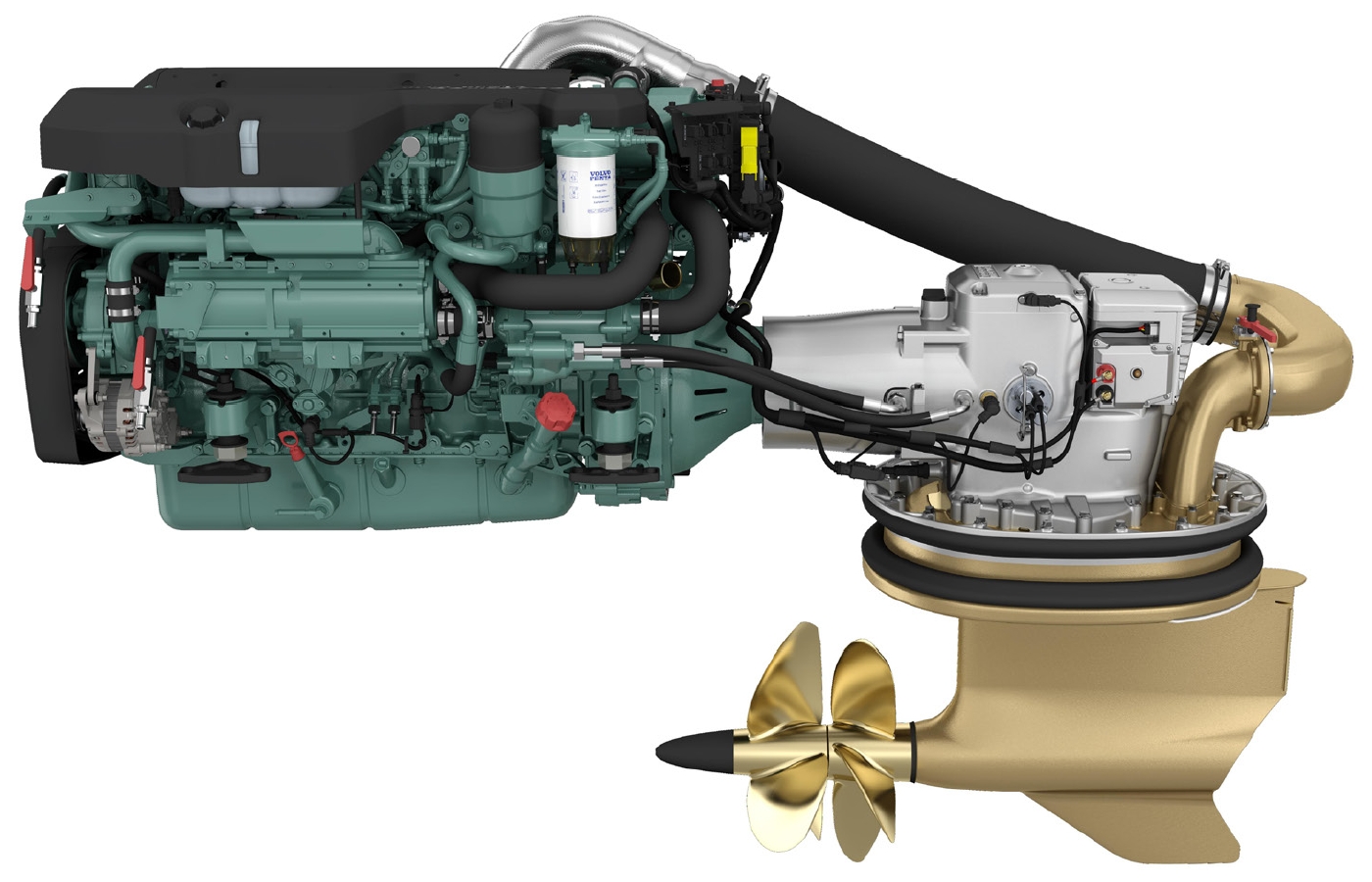


For the same range it requires way less fuel (that compensates, at least partly, its heavier weight and, in the long term, its higher cost).
Spot on the double counter-rotating “pulling” propellers and on the clever mounting of the propulsion system..
Thanks
Manolis Pattakos



